LED Panel Light Basics: Sizes, Backlit vs. Troffer, Install Types
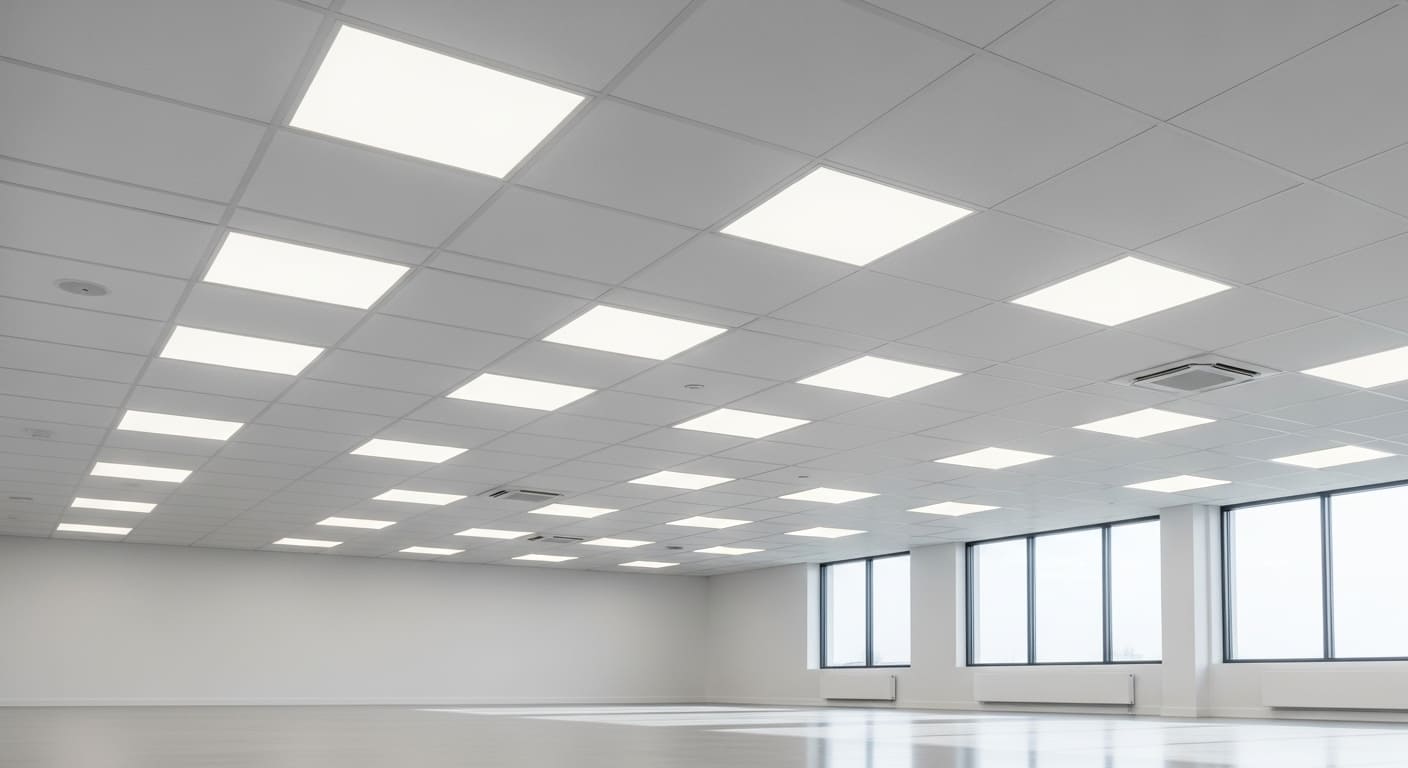
The brightness and quality of lighting in every room affect the level of comfort, productivity, and aesthetic value. LED Panel Light give off a bright and uniform light distribution but at the same time reduce energy and maintenance costs. This guide provides information on the standard sizes, the distinctions between backlit panels and troffers, the popular mounting techniques, and the essential specs that you can apply in an actual project. You’ll also find layout tips, target light levels, FAQs so you can specify with confidence and shop smart with Super Tech Leds.
What Is an LED Panel Light?
An LED panel light is a flat, thin fixture that uses light‑emitting diodes to produce uniform, glare‑controlled light. Panels usually drop into grid ceilings, mount to a surface, or suspend from cables. Compared with older fluorescent troffers, panels start instantly, run cooler, dim more smoothly, and last far longer with minimal maintenance.
Standard Sizes You’ll See (Imperial & Metric)
Matching the panel to your ceiling grid keeps projects simple. These are the most common options:
- U.S. grid sizes: 1×4 ft, 2×2 ft, and 2×4 ft
- Metric sizes: 300×300 mm, 300×1200 mm, 600×600 mm, and 600×1200 mm
A 2×4 often suits open offices and classrooms. A 2×2 fits corridors, restrooms, and patient rooms. Narrow 1×4 panels work well over workbenches or in hallways with linear runs. For plaster or drywall ceilings, look at surface‑mount frames or recessed kits sized to match the cutout.
Backlit vs. Edge‑Lit vs. Troffer: What’s the Difference?
The terms can get confusing. Here’s a quick breakdown:
Backlit LED Panels
LEDs sit behind the diffuser, pointing forward.
Pros: High efficiency, consistent brightness across the lens, robust frame, good glare control, generally lower cost per lumen.
Consider if you want: Strong efficacy, stiff construction, and simple maintenance.
Edge‑Lit LED Panels
LEDs sit around the edge and push light through a light guide plate.
Pros: Super‑slim profile, sleek aesthetic, lightweight.
Consider if you need: Ultra‑thin fixtures for tight plenums or minimalist designs.
LED Troffer Panels
A troffer is a recessed fixture designed for a grid ceiling. Classic troffers were fluorescent; modern versions use LED boards or accept LED panel inserts.
Pros: Familiar form factor, deep housings can reduce glare, many retrofit kits exist for swapping fluorescent guts.
Consider if you’re: Retrofitting older buildings, preserving an existing look, or meeting specific optical preferences.
Which is better? For most projects, backlit panels provide the best balance of cost, efficiency, and uniformity. Edge‑lit wins on sleekness and tight clearances. Troffers make sense when you’re reusing housings or following a spec that calls for them.
Install Types
1) Recessed Grid (Drop Ceiling)
Panels drop into T‑bar ceilings with minimal tools.
Best for: Offices, schools, clinics, retail, and tenant improvements where a grid already exists.
Watch for: Plenum depth, grid size, and local fire/smoke requirements.
2) Surface‑Mount Frames
A low‑profile frame attaches to drywall or concrete; the panel snaps inside.
Best for: Apartments, corridors without a grid, lobbies with solid ceilings, healthcare spaces seeking easy wipe‑down.
Watch for: Wire routing, driver clearance, and anchor type for the substrate.
3) Suspended (Pendant) Kits
Cables or rods hang panels for a floating look and better vertical illumination.
Best for: Retail floors, design studios, hospitality lounges, event venues, and high ceilings.
Watch for: Cable leveling, power feed location, and desired mounting height to manage glare.
4) Retrofit Kits
Convert an existing fluorescent troffer by replacing lamps/ballast with an LED kit or by inserting a panel.
Best for: Budget‑conscious upgrades with dozens or hundreds of fixtures.
Watch for: Housing dimensions, door frame compatibility, and code compliance.
Light Quality Essentials: CCT, CRI, and UGR
- CCT (Color Temperature):
The warm and welcoming feeling of 3000K, the balanced warmth for offices of 3500K, the crisp look for retail and classrooms of 4000K, and the daylight-cool appearance for inspection or industrial lines of 5000K are the different color temperatures in lights.
- CRI (Color Rendering Index):
Aim for CRI 80+ as a baseline; 90+ helps with fashion, healthcare, galleries, and any task demanding faithful color.
- UGR (Glare):
Lower is better. Look for panel optics and micro‑prismatic diffusers designed for UGR <19 in work areas to reduce eye strain.
Drivers, Dimming, and Controls
- Driver Types: Most panels use remote or integrated constant‑current drivers.
- Dimming: 0–10V remains common, while TRIAC/ELV suits residential retrofits.
- Controls: Add motion sensors, daylight harvesting, or wireless controls to trim energy bills. Tunable white (2700–6500K) supports circadian‑friendly schedules in healthcare, offices, and education.
Industry‑Specific Guidance
Homeowners & Residential
The use of panels brings a modern touch to various rooms around the house such as kitchens, home offices, and garages. In the living areas, the light should be of 3000-3500K, while in the places where task clarity is necessary, 4000K is suggested. For drywall, use surface-mount frames and set up dimmable drivers for creating a nice light mood.
Business & Commercial Offices
The light from 3500 to 4000K is balanced, providing a good working atmosphere set without feeling cold. Light-emitting panels with UGR-friendly optics minimize glare from screens. Workstations can be illuminated with flexibility by layering with various types of light and zoning and meeting rooms could be equipped with wireless controls.
Retail & Hospitality
Visual merchandising needs crisp, inviting light. Use 3500–4000K and CRI 90+ near displays. Suspend panels over circulation paths for drama and deploy surface‑mounted units in back‑of‑house.
Industrial & Construction
Bright, uniform light improves accuracy and safety. Go 4000–5000K with robust frames and optional damp‑location ratings. Add occupancy sensors for low‑traffic aisles and consider higher lumen packages in tall bays.
Event & Entertainment Industry
Portable, lightweight panels make setup fast. Dimming and tunable white deliver mood shifts between sessions. Suspended kits create a floating ceiling effect for booths and temporary lounges.
Healthcare & Public Buildings
Uniform light reduces fatigue and supports wayfinding. Target low‑glare optics, 3500–4000K, and high CRI in exam and treatment areas. Select low‑flicker drivers for sensitive environments.
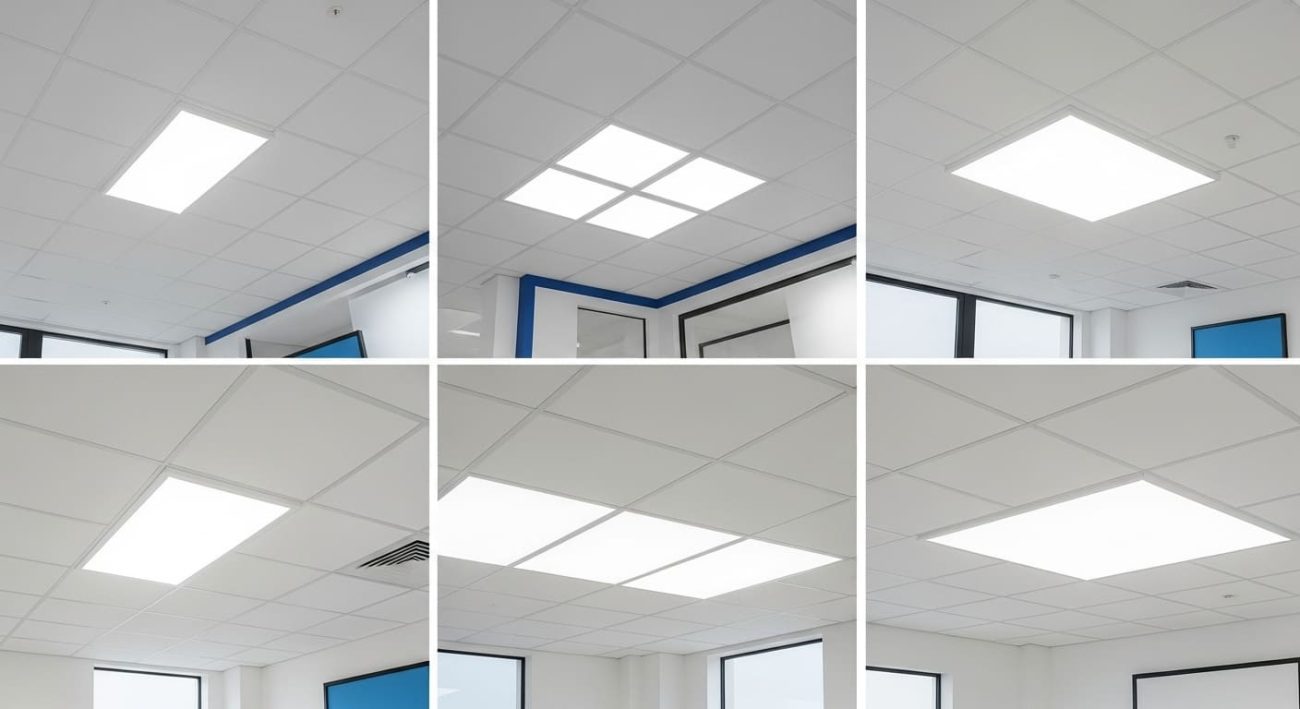
Buying Checklist
- Mounting: Recessed grid, surface, or suspended.
- Size: 1×4, 2×2, 2×4, or metric equivalents.
- Backlit vs. Edge‑Lit vs. Troffer: Match performance, profile, and budget.
- Output & Efficacy: Compare lumens, watts, and lm/W.
- CCT & CRI: Select color and rendering suited to the task.
- Glare Control: Lens type, micro‑prismatic optics, and UGR targets.
- Dimming & Controls: 0–10V, TRIAC/ELV, wireless, sensors, tunable white.
- Ratings & Listings: DLC, UL/ETL, damp/wet location where needed.
- Driver Quality: Low flicker, long warranty, surge protection.
- Warranty & Support: Look for 5 years or more with accessible parts.
Recommended Light Levels (Rule of Thumb)
| Space | Target illuminance |
| Open Office / Classroom | 300–500 lux |
| Retail sales floor | 500-1,000 lux |
| Corridors | 100-200 lux |
| Kitchen / workshop / garage | 300-500 lux |
| Patient room | 100-300 lux |
Use these as planning baselines. Local codes and standards may set specific requirements.
Cost, Energy, and ROI Snapshot
LED panels cut energy use by 40–70% versus fluorescent troffers, depending on lumen package and hours. Maintenance savings show up quickly because there are no tubes to replace. Controls add further reductions by dimming during daylight or shutting off after hours. A well‑specified project often pays for itself through utility savings and rebates within a few years, while occupants enjoy better visual comfort the entire time.
Layout Tips and a Fast Count Formula
Spacing: Start with spacing roughly 1.0–1.5× the mounting height above the workplane for uniformity.
Panel count estimate:
N = (Target lux × Room area in m²) ÷ (Panel lumens × CU × LLF) Where CU (coefficient of utilization) is approximately 0.6 and LLF (light loss factor) is approximately 0.8 for the usual designs.
Example (small office):
Room area 20 m², target 400 lux, panel 4,000 lm, CU 0.6, LLF 0.8.
Denominator = 4,000 × 0.6 × 0.8 = 1,920
Numerator = 400 × 20 = 8,000
N = 8,000 / 1,920 ≈ 4.17 → plan 4–5 panels and arrange for symmetry and uniformity.
Common Mistakes to Avoid
- Mixing color temperatures within one room.
- Forgetting dimming compatibility between driver and control system.
- Overlooking ceiling grid size or depth before ordering.
- Ignoring glare metrics near computer screens.
- Skipping rebate checks and missing easy incentives.
Quick Recommendations by Goal
- Modernize appearance on a budget: Backlit 2×4 panel, 4000K, 0–10V dimming.
- Ultra‑clean look in tight plenums: Edge‑lit 2×2 with low UGR lens.
- Fast retrofit of legacy troffers: Panel‑in‑troffer retrofit kit with plug‑and‑play 0–10V.
- High color accuracy for products or care: CRI 90+, 3500–4000K, flicker‑free driver.
FAQs
Q1. Are LED panels brighter than my fluorescent troffers?
Usually yes at the same or lower wattage. Efficacy keeps improving, and optics distribute light more evenly.
Q2. Which is more efficient backlit or edge‑lit?
Backlit panels typically edge out on efficacy and uniformity. Edge‑lit appeals when you need the slimmest profile.
Q3. Can I install a panel on drywall without a grid?
Yes with a surface‑mount frame. The frame screws to the surface, then the panel clips in.
Q4. What color temperature should I pick for offices?
Aim for 3500–4000K to balance alertness with comfort. Add dimming and controls for different tasks.
Q5. Do LED panels work with smart controls?
They do when paired with compatible drivers, sensors, and wireless nodes. Check the driver spec for supported protocols.
Q6. How long do LED panels last?
Quality panels list 50,000–100,000 hours to L70. That equals many years in typical commercial use.
Q7. Will panels reduce glare on screens?
Yes if you choose optics designed for low UGR and position fixtures thoughtfully. Indirect glare can still occur, so combine with task lighting.
Q8. Can I reuse my existing troffer housings?
Usually, it is possible by using retrofit kits. Make sure to check housing size and door compatibility first.
Final Takeaway
LED panel light produce efficient, even lighting and come with various mounting and dimming options. Backlit designs are applicable for the majority of projects; edge-lit ones are chosen due to their slimness, and troffers are still a reliable option for retrofits. Match size, CCT, CRI, glare control, and driver compatibility to your application, and you’ll elevate visual comfort while trimming energy and maintenance across homes, businesses, retail floors, industrial lines, event venues, and public buildings.











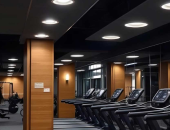































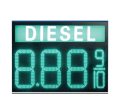













































 DOUBLE RING FLUSH MOUNT
DOUBLE RING FLUSH MOUNT DOWNLIGHTS & RETROFITS
DOWNLIGHTS & RETROFITS EMERGENCY LIGHTS
EMERGENCY LIGHTS PANEL LIGHTS
PANEL LIGHTS UFO HIGH BAYS
UFO HIGH BAYS LINEAR HIGH BAYS
LINEAR HIGH BAYS LED EXHAUST FAN
LED EXHAUST FAN LIGHT BULBS
LIGHT BULBS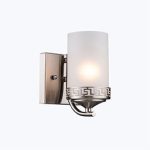 VANITY LIGHTS
VANITY LIGHTS HAZARDOUS LIGHTING
HAZARDOUS LIGHTING TUBE LIGHTS
TUBE LIGHTS LED INTERGRATED FIXTURES
LED INTERGRATED FIXTURES INTEGRATED FIXTURES
INTEGRATED FIXTURES RETROFIT BULBS
RETROFIT BULBS CANOPY LIGHTS
CANOPY LIGHTS CORN BULBS
CORN BULBS FLOOD LIGHTS
FLOOD LIGHTS GAS PRICE SIGNS
GAS PRICE SIGNS POST TOP LIGHT
POST TOP LIGHT SHOEBOX LIGHTS
SHOEBOX LIGHTS WALL PACKS
WALL PACKS VAPOR PROOF
VAPOR PROOF LED MODULES
LED MODULES DRIVERS / POWER SUPPLY
DRIVERS / POWER SUPPLY CONTROLLERS
CONTROLLERS WIRING ACCESSORIES
WIRING ACCESSORIES